An update on Euro VII: The Future Regulation of the European Commercial Vehicle Industry
By Luke Willetts - 5th March 2024
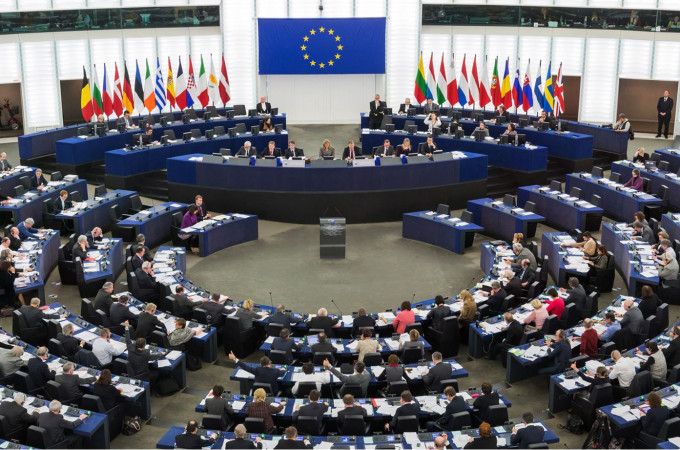
EU Parliament, Brussels, Belgium
Belgium – Late last year, it was announced that the European Parliament and Council (EC) reached a provisional agreement on the Euro VII* (7) legislation, which still needs to be endorsed and formally adopted by both institutions. This legislation forms part of the EU roadmap to “near-zero emission vehicles by 2035” within the wider European Green Deal**. For the first time, it covers cars, vans, and heavy-duty vehicles in one single piece of legislation. The above-mentioned agreement retains the Euro 6 emissions limits for cars and vans but reduces the limits for buses and trucks, whilst introducing limits for particles emitted from the exhaust, brakes and tyres. Besides gas emissions and particulates, the legislation sets limits for battery durability incorporating what the EC calls, a “whole vehicle approach” as opposed to just engine testing.
According to the European Commission:
The estimated environmental benefits in terms of avoided health impacts from air pollution significantly outweigh these costs to manufacturers, consumers and authorities, by a ratio of more than five to one. The proposed Euro VII laws will also introduce battery durability standards for electric vehicles to help raise consumer awareness and confidence, while plug-in hybrids may be forced to switch to purely electric driving when they enter designated city centres.

Smog in Paris
A deeper look
In terms of exhaust emission limits for Commercial Vehicles (CVs), there is a more comprehensive list of pollutants, which includes ammonia limits whilst placing restrictions on the formaldehyde and nitrous oxide (N2O) gas outputs allowed, as well as tailpipe emissions of nitrogen oxides (NOx), carbon monoxide (CO), particles, hydrocarbons and methane for heavy vehicles. To ensure pollutants are kept within legal limits, Euro VI standards are maintained, requiring new trucks to have onboard emissions monitoring systems (OBM) installed.
Euro VII emissions limits are now more stringent. For cars and vans, the provisional agreement maintains the existing Euro 6 exhaust emission limits, however, Euro VII for trucks and buses limits the emission of solid particles with a diameter starting from 10 nm (PN10), instead of 23 nm as in Euro VI.
Moving onto brake and tyre emissions, limits for these particulate emissions will be set at 3mg/km in the standard driving cycle for pure electric vehicles and 7mg/km for all other powertrains. Specific limits for vans (except for heavy vans) include 5mg/km for pure electric vehicles and 11mg/km for other powertrains. The logic behind regulating brake dust and other non-exhaust emissions, according to the report, is to force OEMs to accelerate the introduction of regenerative braking technology, which recuperates energy from slowing vehicles and turns it into electricity for on-board battery packs, rather than relying on the clamping force of brake pads on discs to slow a vehicle.
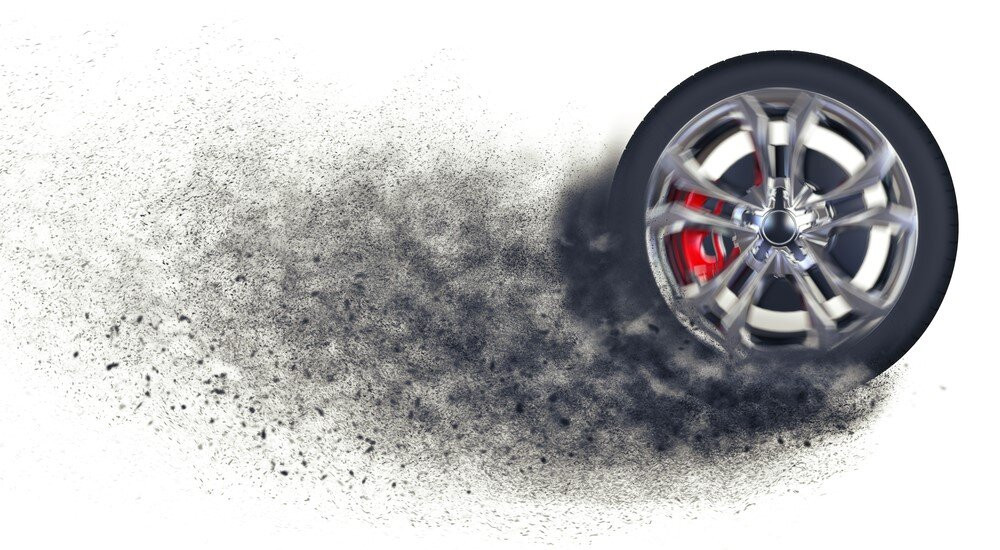
Tyre emissions
The agreement also proposes stricter lifetime requirements for all vehicles in terms of both mileage and lifetimes; that now goes up to 200,000 km or 10 years for cars and vans.
Proposed application dates after the regulation is ratified into law include 30 months for new types of cars and vans. For new types of buses, trucks and trailers, 48 months and 60 months for all new vehicles. 30 months for new systems, components, or separate technical units to be fitted in cars and vans, and 48 months for those to be fitted in buses, trucks, and trailers.
Manufacturers Reaction: ACEA
We know that ACEA*** (European Automobile Manufacturers’ Association) has been a constant dissenting voice, slamming the proposed standards as too severe, unrealistic, and too costly by citing a lack of support both in terms of funding and critical infrastructure. ACEA Chairman Martin Lundstedt warned that over-stringent measures would mean more R&D expenditure on diesel engines and therefore less on electric powertrain technologies. ACEA specifically asked policymakers to focus on accelerating fleet renewal, prioritising investments in zero-emission vehicles, which will have a far bigger impact on both air quality and reduced CO2 emissions.

2023 ACEA Annual Reception, in Brussels
On behalf of the European vehicle industry, Sigrid de Vries, ACEA Director General said:
Although we will only understand the full details once we can assess the entire document, we note that the inter-institutional negotiators have principally opted to prioritise future-oriented challenges, such as light-duty vehicle brake emissions and electric vehicle battery requirements. Exhaust emission limits and test procedures for heavy-duty vehicles were significantly tightened as well. It is important to note that many of the new provisions bring significant technical and investment challenges at a crucial time in the zero-emission mobility transformation. As key elements are still to be decided through secondary legislation, we will continue working to ensure a realistic Euro 7, within the limitations imposed by the primary legislation.
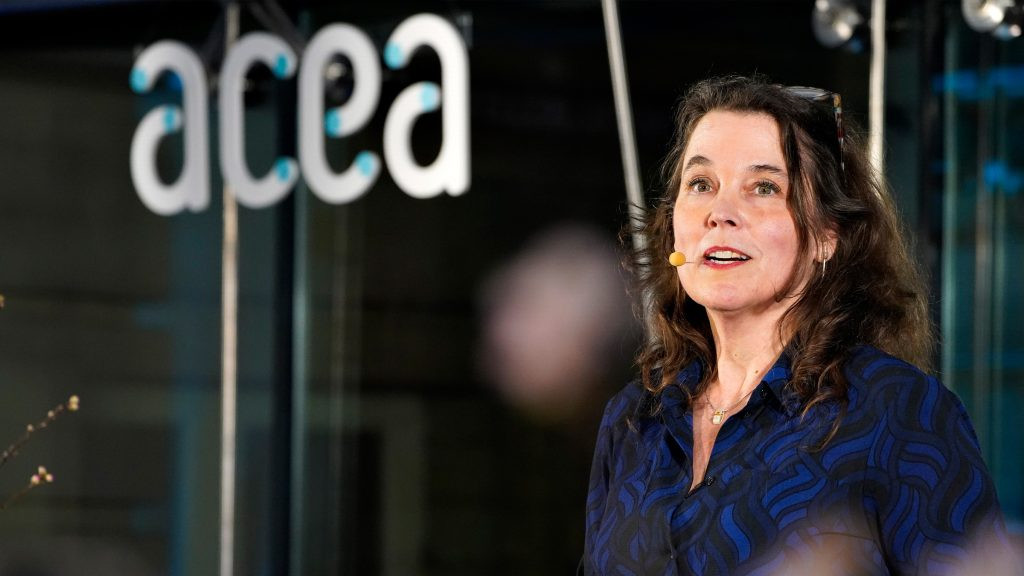
Sigrid de Vries, ACEA Director General at the 2023 Annual Reception
Alongside ACEA Chairman Martin Lundstedt, Luca de Meo (ACEA President), Harald Seidel (Chairman of the Commercial Vehicle Board) and Domenico Nucera (Chairman of its Bus and Coach**** division) have been in close consultation with EU policymakers over the impending Euro VII legislation, of which the organisation has been highly critical, namely for moving resources from battery-electric vehicle technology back to internal combustion engines and consequently potentially slowing down the transition to climate neutrality. This came in the form of an open letter to Frans Timmermans, Executive Vice-President of the European Commission, calling on the Commission to align Euro VII policy and the CO2 emission targets so that the industry can streamline developments into one strategic pathway, rather than multiple development pathways.

From left to right, Luca de Meo (ACEA President), Sigrid de Vries, (ACEA Director General) and Martin Lundstedt (ACEA Chairman) at the Annual Reception
Infrastructure Barriers
In terms of transport and logistics infrastructure needed to get zero-emission vehicles on the roads in large numbers, a few topics have been raised by ACEA representatives. These included a dense network of charging and refuelling infrastructure as well as the production of green energy suitable for heavy-duty vehicles. Christian Levin, CEO of Scania, warned that different charging infrastructure for CVs is required due to the size of the vehicles, with at least one-megawatt power output to service demand. This necessary infrastructure would cost between USD50 and USD60 billion according to the World Economic Forum (WEF).
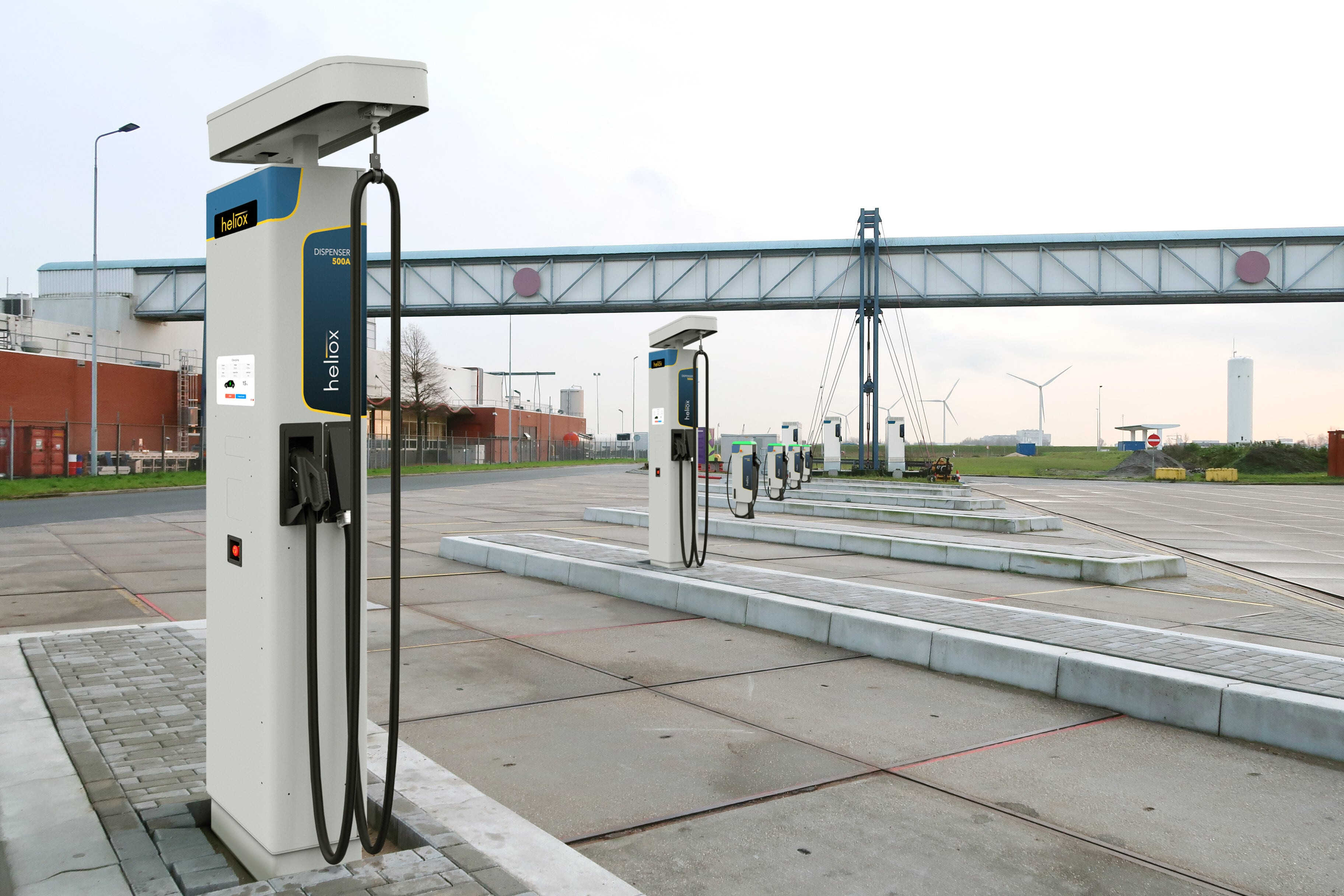
Heliox e-truck chargers
Both public and private institutions have laid out plans to tackle the critical infrastructure shortage. July last year saw the European Parliament pass the Alternative Fuels and Infrastructure Regulation Act. Under the law, charging stations (1,400 kW to 2,800 kW power outputs) for Commercial Vehicles will be placed every 120km along the EU’s main highways by 2028, whilst hydrogen refuelling stations will be installed at least every 200 km by 2031. Under the deal, each EU member state must commit to a mandatory minimum infrastructure target, presenting the European Commission with a roadmap to reach its goal.
In the private sector, a charging infrastructure joint venture (JV) between Traton SE, Daimler Truck AG, and AB Volvo called Milence plans to install and operate at least 1,700 charging points, supplied with renewable energy, on highways and at logistics hubs across Europe. Initially proposed in 2021, the JV has received regulatory approvals and in 2022 appointed a CEO, Anja van Niersen. Each company is investing EUR 500 million, intending to encourage greater and swifter uptake of electric vehicles in Europe. In January this year, Milence opened its first charging facility in the Netherlands.
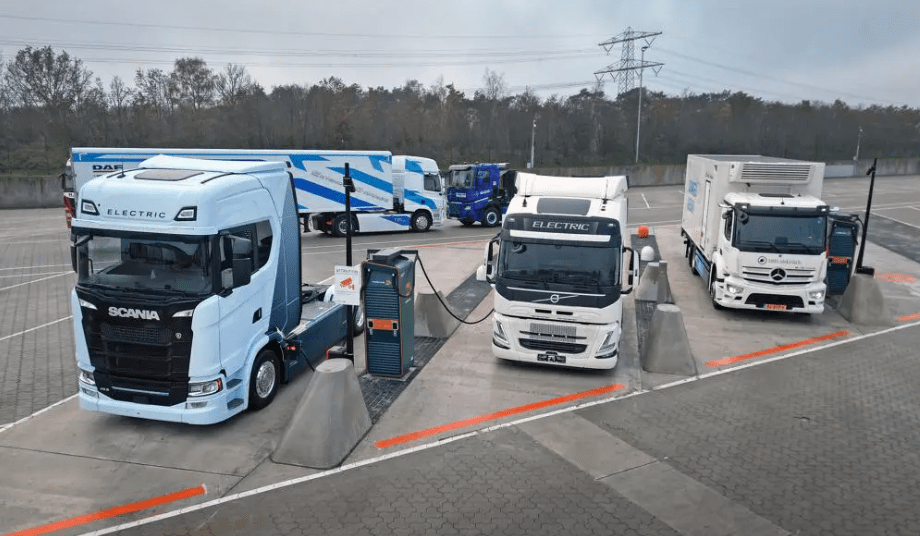
Milence electric truck charging hub, Venlo, Netherlands.
*The European Parliament defines Euro 7 (VII) as “the regulation for the type-approval of motor vehicles and engines, and of the systems, components and separate technical units intended for such vehicles, with respect to their emissions and battery durability.”
**The European Green Deal, approved in 2020, is a set of policy initiatives by the European Commission with the overarching aim of making the European Union climate-neutral by 2050.
***The European Automobile Manufacturers’ Association (ACEA) represents the 16 major Europe-based car, van, truck and bus makers: BMW Group, DAF Trucks, Daimler Truck, Ferrari, Ford of Europe, Honda Motor Europe, Hyundai Motor Europe, Iveco Group, Jaguar Land Rover, Mercedes-Benz, Renault Group, Stellantis, Toyota Motor Europe, Volkswagen Group, Volvo Cars, and Volvo Group.
****ACEA’s Bus and Coach division brings together Europe’s five main bus and coach manufacturers: Daimler Truck, Iveco Group, MAN, Scania, and the Volvo Group.



